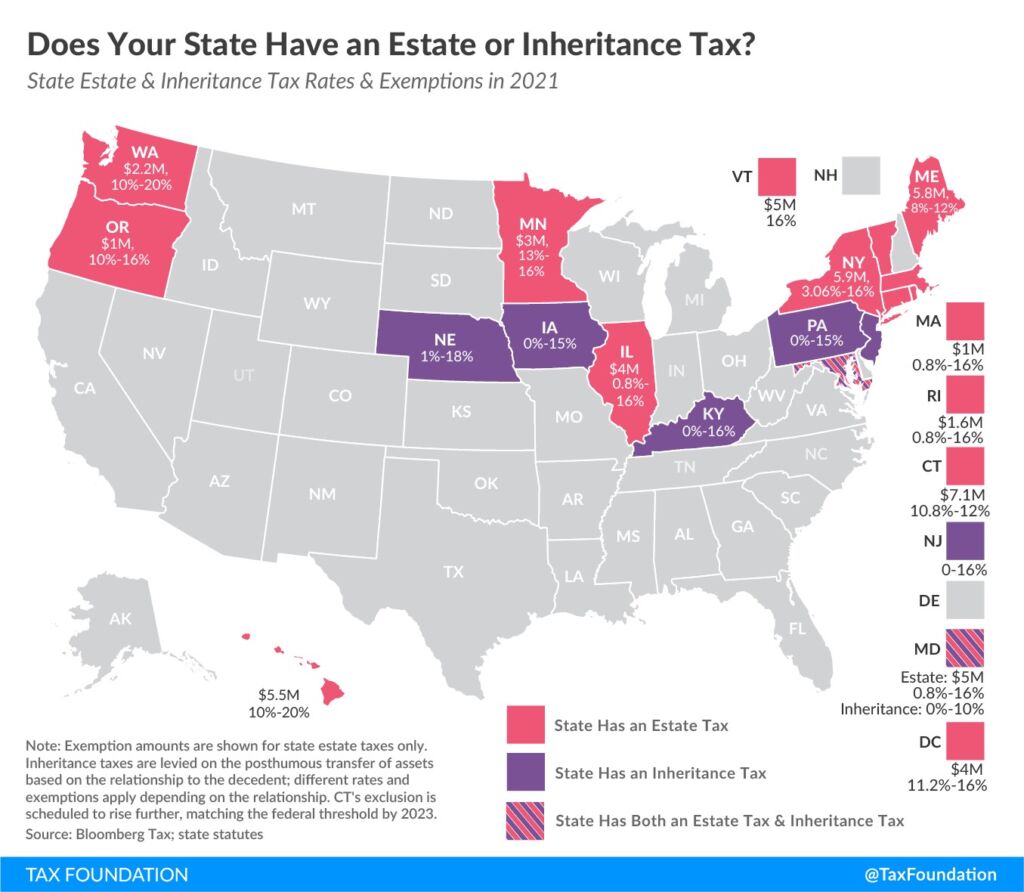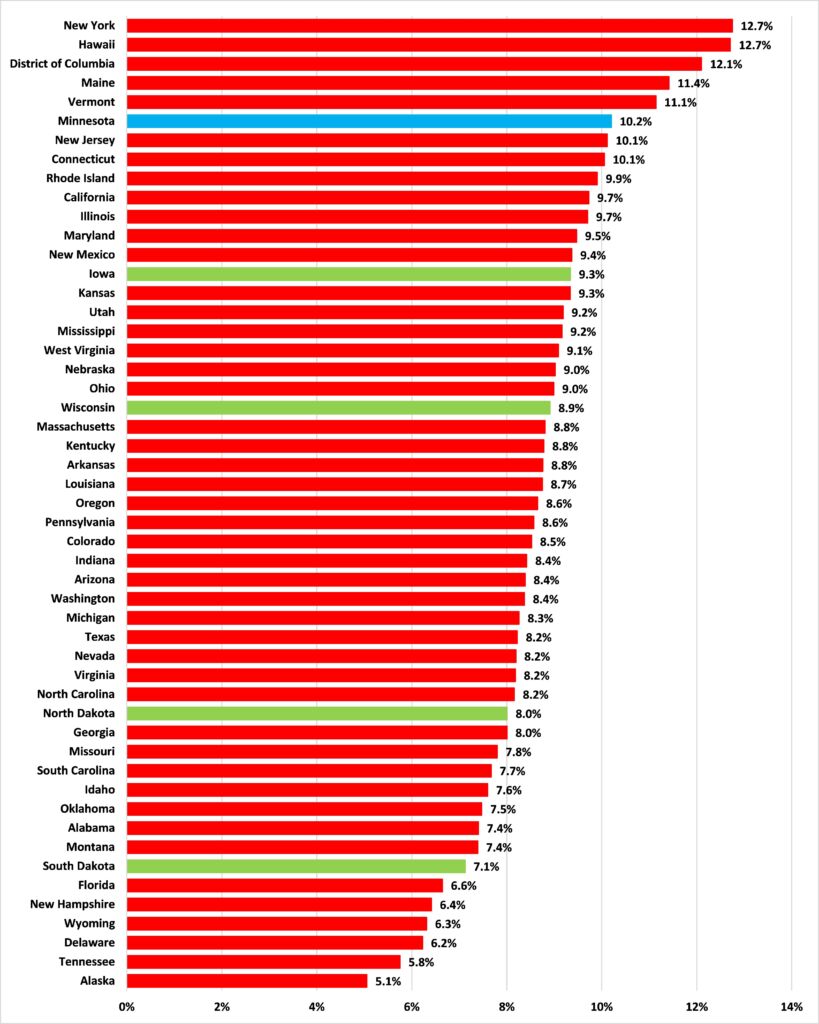The Surplus: Minnesota has some of the highest tax rates in the United States
On Dec. 7, Minnesota Management and Budget (MMB) released its budget forecast for Fiscal Year 2022-23 which foresaw a $7.746 billion projected surplus. This immediately sparked a debate about what should be done with that money.
For a number of reasons, it should be given back to the people who earned it — ordinary, hard working Minnesotans — via tax cuts.
Minnesota has some of the highest tax rates in the United States
One reason to cut taxes is that Minnesota has some of the highest taxes in the United States.
Income tax
As Figure 1 shows, Minnesota has the sixth highest top rate of state personal income tax in the United States — 9.85 percent. Only Oregon, New Jersey, New York, Hawaii, and California have higher top rates. Furthermore, while the top rates for the District of Columbia (seventh highest), New Jersey, and California all kick in at incomes of $1 million annually, and New York’s top rate kicks in at an annual income of $25 million, Minnesota’s kicks in at the relatively low level of an annual income of $166,040.
Minnesota doesn’t just tax “the rich” heavily. As Figure 1 shows, our state’s lowest personal income tax rate — 5.35 percent on the first dollar of taxable income — is higher than the highest rate in 24 states.
Figure 1: Top rate of state personal income tax and Minnesota’s lowest rate, 2021

Corporate tax
It is a similar story with state corporate income tax rates, as Figure 2 shows. At 9.80 percent on the first dollar of taxable revenue, our state has the joint third highest state corporate income tax rate in the United States. Only Pennsylvania and New Jersey have higher rates. Furthermore, Iowa’s rate of 9.80 percent only kicks in at revenues above $250,000 annually.
Figure 4: Top rate of state corporate income tax, 2021

Estate tax
Minnesota is also one of only twelve states and the District of Columbia to impose an estate tax (a further six impose inheritance taxes and Maryland imposes both), as Figure 3 shows.
Minnesota’s estate tax burden is also one of the heaviest. Of the 13 jurisdictions imposing one, Minnesota’s exemption, $3 million, is lower than in another eight. At 13 percent, Minnesota has the second-highest minimum rate of estate tax after Vermont.
Figure 3

Overall tax burden
These high tax rates contribute to one of the highest tax burdens in the United States.
As seen in Figure 4, at 10.2 percent in 2019, Minnesota had the sixth highest ratio of state and local sales, property, and individual incomes tax revenues to Personal Income out of the fifty states and District of Columbia. Our state’s tax burden has ranked in the top ten on this measure in every year since at least 2009.
Figure 4: State and local sales, property, and individual income tax revenues as a share of Personal Income, 2019

Contrary to what you often hear, these high taxes are not buying Minnesotans a higher quality of life. If they were, why would people be fleeing high tax for low tax states? What these high taxes do accomplish, as I’ll discuss next week, is lowering Minnesota’s economic growth. For this reason if for no other, we should use the opportunity presented by this surplus to reduce the burden on ordinary, hardworking Minnesotans.